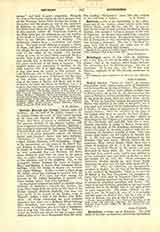

Bethlehem, a titular see of Palestine. The early-name of the city was Ephrata; afterwards Bethlehem, or the sixth century—and has been repaired at still later periods. The Frankish kings were wont to come from Jerusalem to be crowned at Bethlehem, in memory of the coronation of David by Samuel. The greater part of the church is now shared by various communions; while the choir belongs to the Greeks alone, the Grotto of the Nativity is open to the Latins, the Greeks, and the Armenians, who hold services there each in turn.
The first Bishop of Bethlehem, Arnolfo (1099-1103), was appointed by the Crusaders. The see was not canonically erected until 1109, when the title was united with that of Ascalon, till then a Greek diocese (Revue de l’Orient latin, I, 141). The Diocese of Bethlehem-Ascalon existed from 1109-1378, but since the middle of the thirteenth century its bishops resided at Clamecy in France. The Diocese of Bethlehem-Clamecy was created in 1378, and suppressed by the Concordat between Napoleon and Pius VII, in 1801. The titular Bishoprics of Bethlehem and Ascalon, however, had existed separately from 1378 to 1603, when they were suppressed. From 1801 to 1840 both residential and titular sees, either of Bethlehem or Ascalon, were extinct. In 1840, Gregory XVI reunited the title of Bethlehem in perpetuum to the independent Abbey of St. Maurice d’Agaune in Switzerland. In 1867 the titular See of Ascalon was also reestablished.
Bethlehem is today a little town with about sides agriculture, they are engaged in the fabrication of wooden, mother-of-pearl, and bituminous lime-stone objects, such as beads, crosses, etc. The with an orphanage and an elementary school; the Sisters of St. Joseph of the Apparition have two convents, a school, an orphanage, and an infant school; the Sisters of Charity have a hospital and an orphanage; the Carmelite nuns, a monastery. The Greek Catholic parish lately established has not yet a church. There are also Greek and Armenian monasteries, and schools conducted by Greeks, Armenians, and Protestants.
S. VAIHLE

